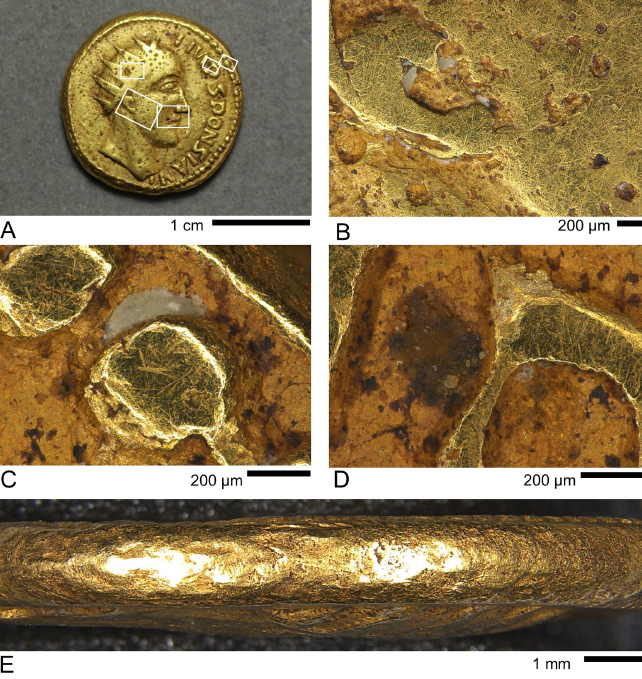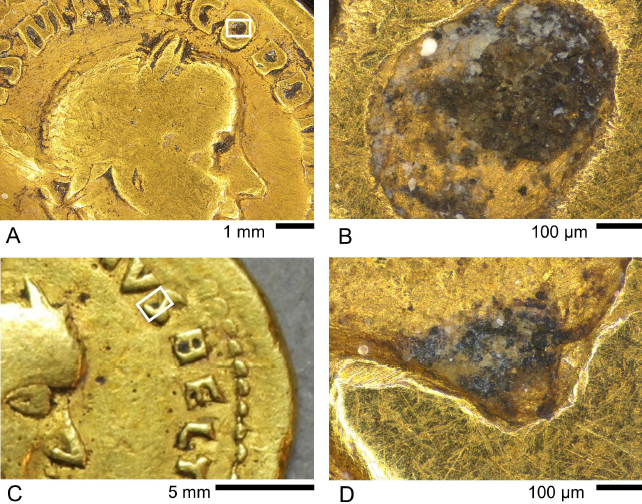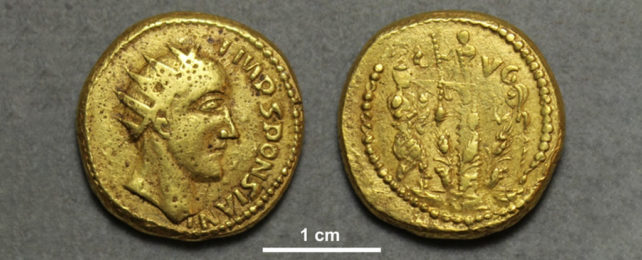Long dismissed as forgeries, a handful of ancient Roman coins uncovered in Transylvania more than three centuries ago have been authenticated by a new analysis.
It's not hard to see why the coins – dated to the 260s CE – might have been considered fakes. Where most ancient coinage displays the head of an emperor, one of the artifacts displays a mysterious figure not portrayed in any other known record.
On some the name "Sponsian" is stamped, a figure of Roman authority history seems to have forgotten.
"Scientific analysis of these ultra-rare coins rescues the emperor Sponsian from obscurity," says University College London earth scientist Paul Pearson, who led the study.
Discovered in 1713, the gold aurei coins had been declared poor forgeries in the mid-19th century by the leading expert at the time, a man named Henry Cohen, due to many irregularities. They differ in manufacture and style to authentic coins of their period, for example, vary considerably in weight, have mixed up motifs and messed up inscriptions.
Imitations of Roman coins were made outside of the empire at the time, and again during the Renaissance period as clearly fake trinkets. Later, more realistic forgeries were produced with simulated wear intended to trick wealthy coin collectors.
The weight of the gold in the 1713 collection exceeds US$20,000 in modern value. Three of the four coins stored at The Hunterian Museum in Scotland for the past two centuries depict actual emperors, including one known as Philip the Arab, but the fourth features the mystery man.
The name Sponsian is also very peculiar, with the only other known instance of it being from a Roman funerary inscription "Nicodemus Sponsian" dated to the first century. What's more, this sole other instance of the name wasn't even known at the time of the coins' discovery.
"Here we emphasize the fact that the inscription was excavated in the 1720s so could not have been known to a hypothetical forger, who would therefore have to have invented apeculiar name that later proved genuine," the team explains in their paper.
Using ultraviolet imaging, visible light, and scanning electron microscopy, Pearson and colleagues found wear scratches covering the coins' surfaces. This suggests the tokens had experienced extensive use and circulation amongst other coins, and had not been deliberately scratched to imitate use. Miniscule bits of soil cemented onto the surfaces supports the claim the artifacts really had been buried for a long period of time.

The coins have varying compositions, all over 90 percent gold but also with different small mixes of silver and copper. This differs from two genuine Roman mint coins used for comparison, which are essentially pure gold.
The Sponsian coin, in particular, has a distinct mix of gold, silver, and copper that's unlike the ratios measured in any of the other coins. While this might suggest the coins are modern fakes, Pearson and colleagues conclude it probably means the coins were minted outside of ancient Rome, "most likely made from imperfectly refined ore".

Historians have previously speculated that Sponsian may have been a brief usurper during the reign of Philip the Arab in the 240s. But the fact that Philip appears on some of the coins in the same collection contradicts the idea that Sponsian usurped him, the researchers argue.
"These observations force a re-evaluation of Sponsian as a historical personage," Pearson and team write. "We suggest he was most likely an army commander in the isolated Roman Province of Dacia during the military crisis of the 260s CE."
So while he may not have ruled over the entirety of Rome, Sponsian appears to have fashioned his own little empire in a remote gold mining outpost, complete with a crudely minted currency using metals from local mines, probably after the Roman Empire had started to become fractured, the researchers suspect.
"We suggest that Dacia became cut off from the imperial center around 260 [CE] and effectively seceded under its own military regime, which initially coined precious metal bullion using old Republican-era designs, then using the names of the most recent previous emperors who had achieved some success in the area, and finally under the name of a local commander-in-chief," the team explain.
Sponsian's "crudely manufactured coins supported a functioning monetary economy that persisted locally for an appreciable period."
This would explain why Sponsian never appeared in any official Roman records, as well as the strangeness of the coins.
"Our evidence suggests [Sponsian] ruled Roman Dacia… at a time when the empire was beset by civil wars and the borderlands were overrun by plundering invaders," Pearson concludes.
This research was published in PLOS ONE.
